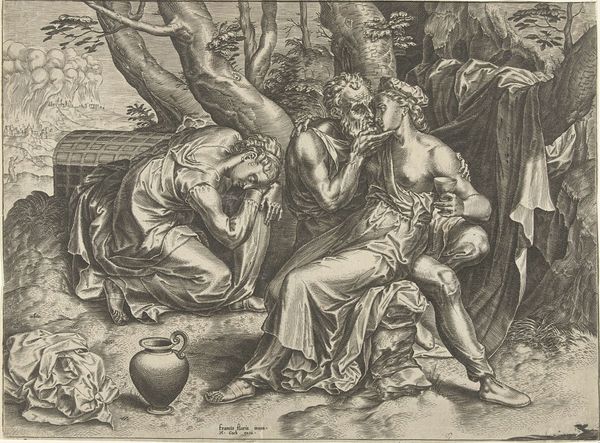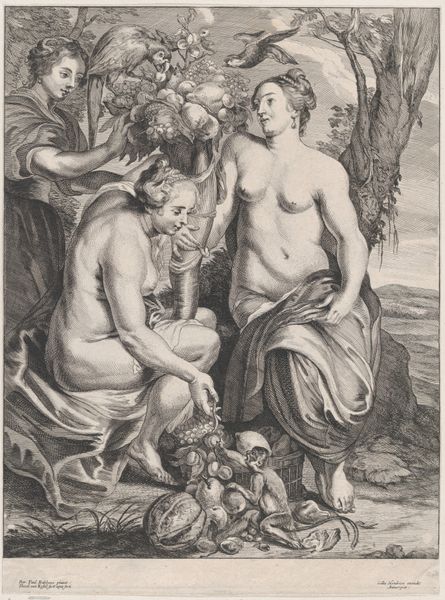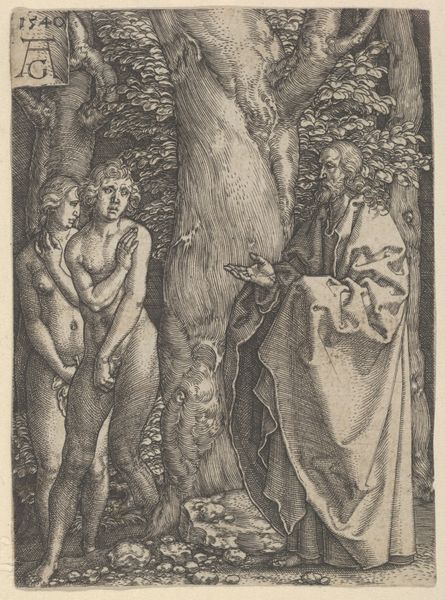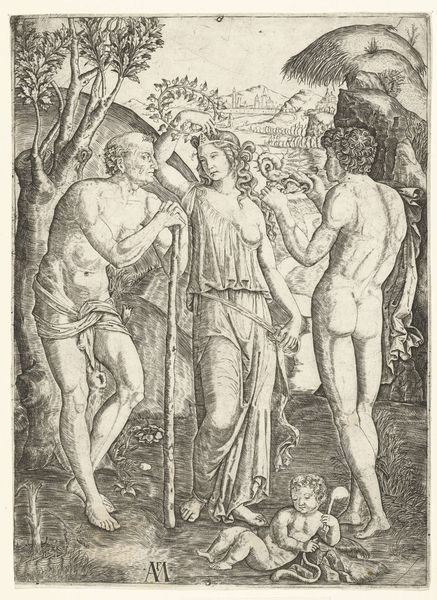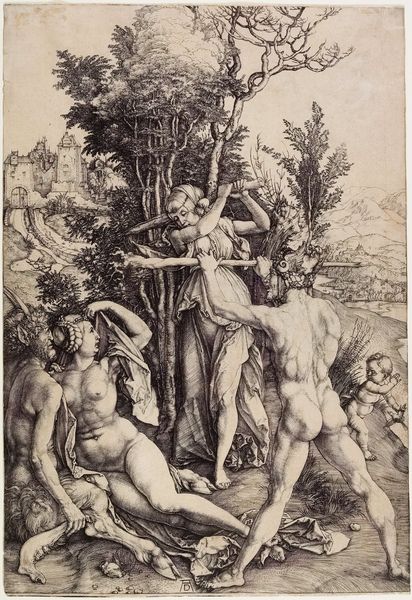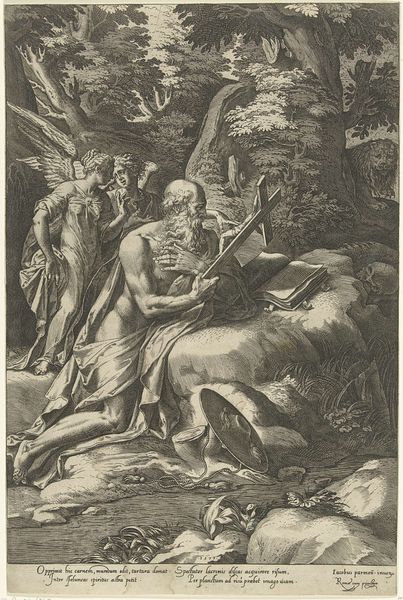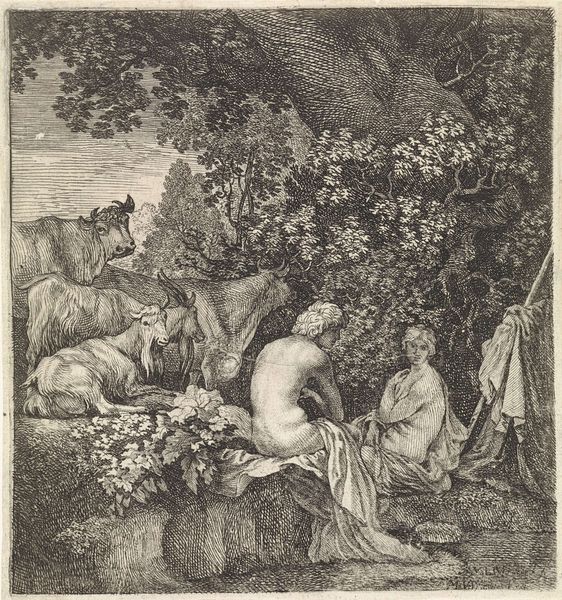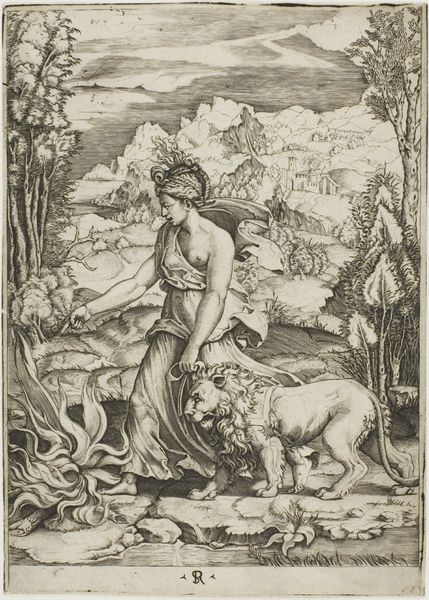
Dimensions: 55.5 x 41.5 cm
Copyright: Public domain
Curator: Lucas Cranach the Elder painted this scene, titled "The Penitence of St. Jerome," around 1502. It is currently held in the Kunsthistorisches Museum in Vienna. Editor: A first impression? Melancholy. The chromatic scale gravitates towards somber greens and browns. It feels less like a celebration and more like an introspective lamentation. Curator: It certainly moves beyond simple depiction, doesn’t it? Cranach doesn't just paint St. Jerome; he presents an iconographic problem resolved through symbolic forms. Notice the lion, of course – a standard attribute, but placed so that its muscular tension contrasts Jerome’s aging frame. Editor: And the choice of landscape! The landscape genre wasn’t prevalent then, yet he foregrounds nature— almost overshadowing Jerome. Is that Christ on the cross, further in the background? The historical setting plays second fiddle to this inner landscape of penitence, wouldn't you agree? How would the public receive such imagery, deviating as it does from traditional religious portraiture? Curator: Precisely. And see how the verdant density compresses the figures. This creates spatial ambiguity. Jerome's form, the lion's flank, the very trees appear sculpted together. Color, texture, the relationship between form and depth. These components guide interpretation. We’re meant to feel hemmed in, just like Jerome. Editor: The socio-political forces shaping the Renaissance were certainly at play. Consider the rise of individual piety. A painting like this encourages a personal connection with the saint and perhaps mirrors some viewers' longing to withdraw and reflect within nature. The burgeoning popularity of pilgrimage and spiritual retreats undoubtedly influenced the painting’s reception. Curator: The painting acts almost as a symbolic mirror reflecting an emotional interiority. Through skillful deployment of material – oil on panel – Cranach captures this perfectly, guiding the eye and manipulating psychological depth through light and form. Editor: Understanding that context gives greater appreciation for Cranach's achievement. He provided not merely an artwork but an invitation—a reflection of the era’s evolving religious and philosophical concerns that reverberate to the current era. Curator: Indeed, the painting allows us to explore formal elements within historical constructs, revealing a profound dialogue between artist and his era, shaped by their shared social tapestry.
Comments
No comments
Be the first to comment and join the conversation on the ultimate creative platform.


